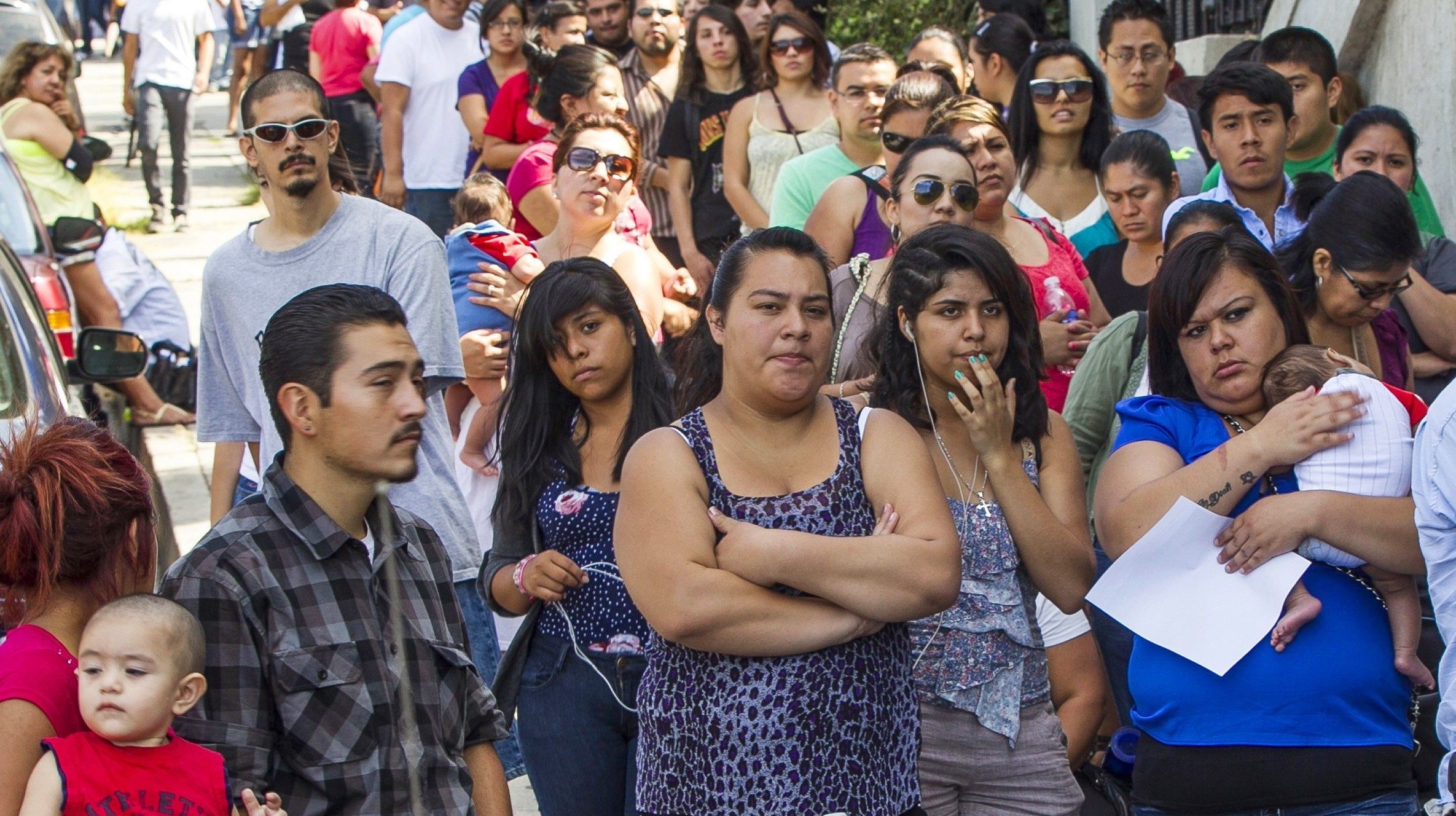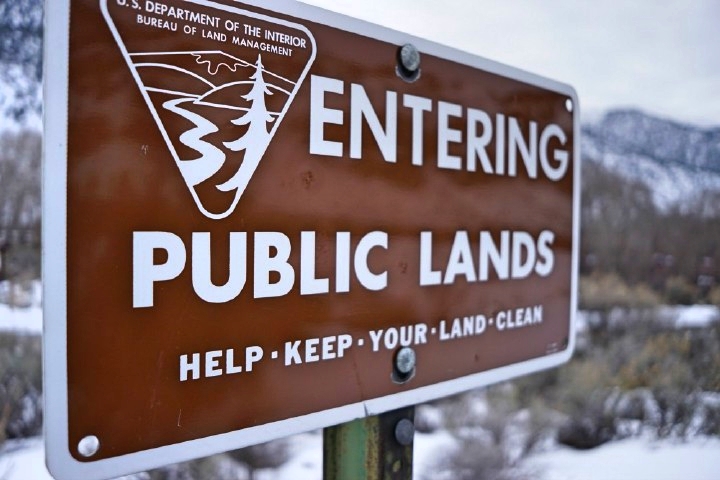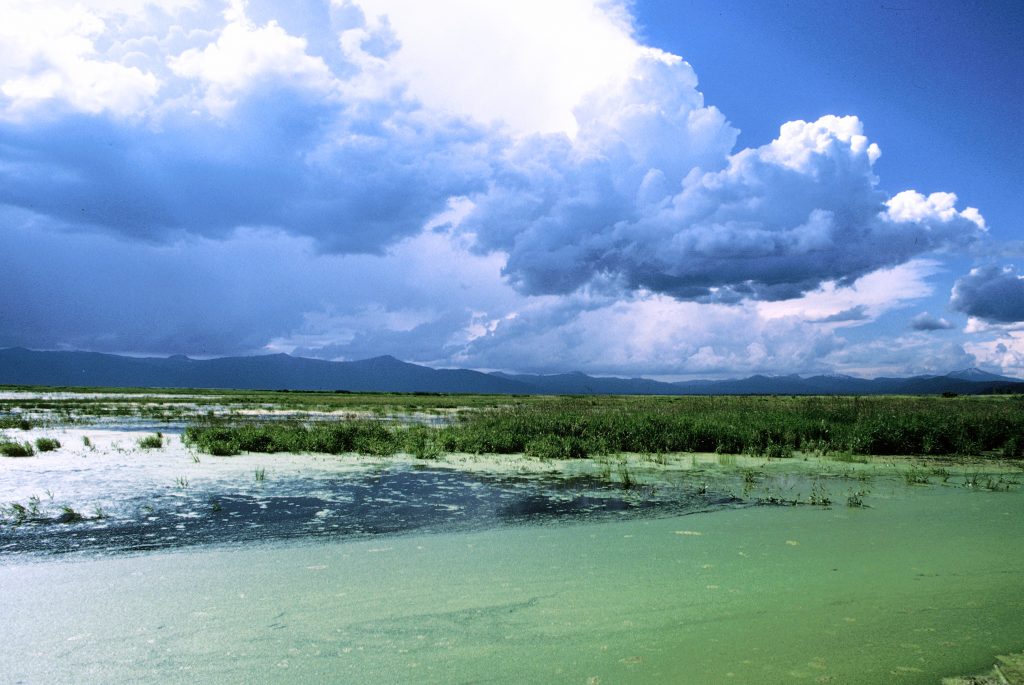Davis in an interview expressed concern that the shelter would mar Hot Springs’ reputation as a tourist destination and doubted that the children are verified as minors. He said he’d prefer that the National Guard take over the site.
“It’s not that we’re not a caring community,” Davis said. “I think if you’re talking about kids, it’s one thing. When you’re talking about teenagers that are probably in their 20s, there’s an uncertainty about security for our community. … It’s just a concern of where they’re coming from.”
3 Arkansas Lawmakers oppose migrant shelter in state
An ongoing federal assessment of whether to convert an abandoned facility near Hot Springs into a temporary shelter for unaccompanied migrant children has drawn opposition, though hundreds of similar kids have already been released into longer-term care in Arkansas.
Three members of Arkansas’ congressional delegation requested that the U.S. Department of Health and Human Services stop considering the former Ouachita Job Corps Center in Royal as a possible holding center, saying in part that the “potential risk to public safety is enormous.” The agency says the center would be a secured facility providing brief stays for unaccompanied migrants age 17 or younger.
These holding facilities — more than 100 are spread across 12 states — are a step between the apprehension of the children and their longer-term placement with sponsors while their asylum claims, visa applications or deportation cases are considered.
Federal data show that, while Arkansas has no such facility, more than 800 unaccompanied children sheltered elsewhere have been released to sponsors throughout the state — usually the kids’ family members — amid a crisis that has dropped more than 150,000 guardianless children at the country’s doorstep over the past three years.
In many cases, these unaccompanied children are fleeing violence near their Central American homes, said Terry Trevino-Richard, state director of the League of United Latin American Citizens.
“We see it as a humanitarian crisis,” Trevino-Richard said. “[Parents] send them often with a name of a relative that they’re hoping they can be connected with and reunited with. They’re coming to the border and looking for the [U.S.] Border Patrol so they can give up.”
The Ouachita Job Corps facility in Garland County “is being assessed to determine if the site is suitable” to serve as a shelter for children “at some point in the future,” U.S. Health and Human Services spokesman Toby Merkt said in an emailed statement.
Merkt said agency staff members toured the site Dec. 19, exactly two weeks after the Arkansas National Guard sent a memo to the landowner, the U.S. Forest Service, expressing interest in using the site for youth programs, according to correspondence obtained by the Arkansas Democrat-Gazette.
“[Health and Human Services] will make the final determination if they will use the former Ouachita Job Corp facilities managed by the USDA Forest Service for Unaccompanied Children operations,” said Merkt, who did not provide a timeline for a decision.
The tour prompted an outcry from U.S. Rep. Bruce Westerman and U.S. Sens. John Boozman and Tom Cotton. The Arkansas Republicans released a joint statement opposing such use of the facility, saying it is “irresponsible and against the wishes of Arkansans.”
“[Health and Human Services] is unable to provide basic information about who may reside at this facility, where these immigrants come from, or how long this shelter will last, and the potential risk to public safety is enormous,” the statement says. “That is why we are calling on HHS to immediately halt any plans to use this facility as an immigration shelter.”
Westerman, of Hot Springs, questioned senior Health and Human Services officials during a conference call but did not get sufficient answers, his spokesman Ryan Saylor said.
“We don’t know if these kids are coming from Syria or other war-torn countries,” Saylor said. “Do they pose a security risk?”
Trevino-Richard said Department of Homeland Security agents can typically determine a child’s country of origin by listening to his dialect.
“When they give up at the border, it’s not like they’re speaking Arabic,” Trevino-Richard said. “They pose virtually no threat to anyone in the United States. They’re seeking safe haven like any refugee would.”
Nationally, about 95 percent of unaccompanied migrant children in 2016 are from Guatemala, El Salvador or Honduras, according to federal data. Two-thirds are male, and 78 percent were ages 15-17.
In the 2014 and 2016 fiscal years, the number of children referred to Health and Human Services surged. The more than 59,000 referrals the agency received in the fiscal year that ended Sept. 30 was a record and more than four times the 13,600 children referred to the agency in fiscal 2012.
The federal government this year opened two temporary shelters — one at a former Job Corps site near Miami and one at Fort Bliss, an Army post that straddles New Mexico and Texas. The Florida site has an 800-bed capacity, and the New Mexico site could hold up to 1,800 children, according to media reports.
Nearly $950 million was appropriated to run the program in fiscal 2016, according to the Health and Human Services Department.
Children are vaccinated upon arrival and stay at the shelters for less than 35 days on average, according to the federal agency. While there, the children do not attend local schools and do not integrate into the community.
Children must remain under constant supervision, even on the rare occasions they are able to leave the facilities and visit the community, according to the Health and Human Services Department, which says the effect on local towns is “minimal.”
“It’s like a prison,” Trevino-Richard said.
Contractors at the holding facilities provide children with food, education, medical care and recreation while locating and vetting potential sponsors, according to the Health and Human Services Department.
Children who are not released to sponsors are placed in foster care.
After that transition and while their immigration cases proceed, the children can enroll in public schools just like any child could, regardless of immigration status, according to the U.S. Department of Education.
Between Oct. 1, 2013, and Oct. 31, 2016, 829 unaccompanied children have been placed with Arkansas sponsors. The state ranks No. 29 in placements, and the number accounts for less than 1 percent of the nearly 140,000 children who have been placed with sponsors throughout the U.S. in that time.
Sponsors are overwhelmingly family members, according to federal data. More than 90 percent of 51,841 Central American children released to sponsors between January 2014 and April 2015 were taken to kin, according to a U.S. Government Accountability Office report published in February.
Sixty percent were placed with their parents, and 25 percent were released to a sibling or a parent’s sibling, the report says. About 8 percent were released to family friends, and less than 1 percent went to an otherwise-unrelated sponsor, the report says.
Saylor said there’s a difference between unaccompanied children coming to Arkansas by way of a sponsor and those going into a shelter.
“Once the children have been placed with a sponsor, generally there has been some kind of background conducted,” Saylor said. “When you just have a shelter, these are kids being shipped in. There has not been proper vetting of them before they’re brought into the state.”
Before the Health and Human Services Department places a child at a shelter, the agency requests background information to determine whether the child is a danger to himself or others and whether he has known mental health issues, according to agency policy.
To protect the children’s privacy, the government does not reveal where the existing shelters are, nor even which states they’re in, though most are within 250 miles of the border, Merkt said.
No such shelters are known to currently operate in Arkansas, Saylor said.
The U.S. Labor Department shut down the Job Corps site this summer despite objections from local officials.
On Dec. 5, the Arkansas National Guard sent a memo to the U.S. Forest Service expressing interest in leasing the Royal facility for its Youth Challenge, which offers academic, physical, job-skills and life-coping-skills training to teenagers who are at least a year behind in high school credits.
The memo referred to needed repairs and maintenance issues at the site.
“Therefore, prior to entering into any contractual obligation or lease agreement of the property, we would like to further discuss these maintenance issues with the intent of resolving what agency is responsible for repairing these issues, and perhaps conducting our own inspection of the facility and grounds,” the memo says.
Although no formal agreement was reached, local officials and the three members of Arkansas’ congressional delegation feel the National Guard should get the first opportunity to make use of the federally owned site because it previously expressed interest, Saylor said.
“This seems out of nowhere,” Saylor said of the Health and Human Services Department’s consideration of the site for a shelter. Saylor said Westerman’s office first learned of the possibility on Dec. 16.
A Wednesday response to the National Guard by the Forest Service requested more information on the National Guard’s youth program and offered no date as to when decisions about the site’s future use may be made.
The Forest Service in the letter estimated that the cost to re-purpose the building would exceed $2 million. To simply ready the facility without using it would cost between $350,000 and $500,000, says the letter, written by a regional supervisor.
“Planning and funding for necessary work at the site is a complex matter and made more so by recent interest expressed by the US Department of Health and Human Services,” the letter says.
Rick Davis, the county judge of Garland County, said he was caught off-guard by news that the Health and Human Services Department was evaluating the facility’s suitability as a shelter.
“Given my experience with the people in this area, I can anticipate strong, vocal and loud ongoing opposition to such a decision,” Davis wrote in an email to a Health and Human Services Department official.
Davis in an interview expressed concern that the shelter would mar Hot Springs’ reputation as a tourist destination and doubted that the children are verified as minors. He said he’d prefer that the National Guard take over the site.
“It’s not that we’re not a caring community,” Davis said. “I think if you’re talking about kids, it’s one thing. When you’re talking about teenagers that are probably in their 20s, there’s an uncertainty about security for our community. … It’s just a concern of where they’re coming from.”
Eric Besson





“In many cases, these unaccompanied children are fleeing violence near their Central American homes, said Terry Trevino-Richard, state director of the League of United Latin American Citizens. ”
Oh really? Dozens of countries they could flee to, if it was dimly to escape violence.
Unaccompanied? Yet many end up being cared for by FAMILY here in the US?
LIES LIES and more lies.
These don’t look like 17 and under… This is all LIES the end up with family members…
Hot Springs just had a list of the poverty rate in the newspaper.. Saying Garland Co has almost 40% poverty rate and 63% are unemployed residents..This doesn’t include children.
Hot Springs can’t support these no residents sucking up welfare. The last I knew the costs of fostering these people( I won’t say children because they all are not). Was very expense, if this much money was offered to our RESIDENTS in need would be another thing .
We don’t want them here send them all back to where they came from.. It’s now our new presidents wish for the American people to not be responsible for this invasion any-longer..